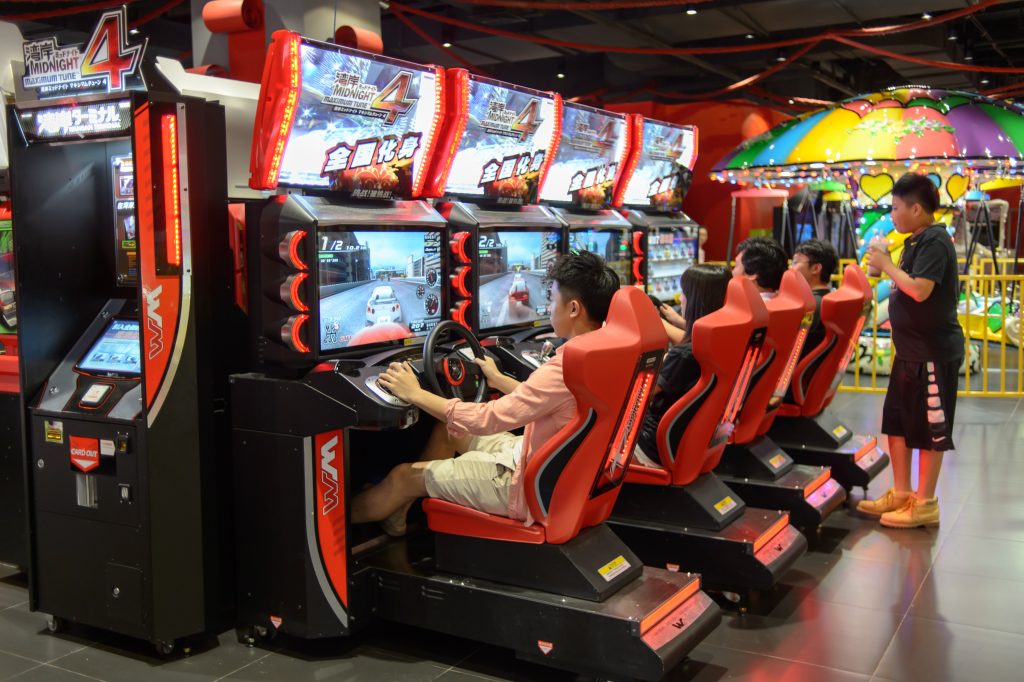The path to mainstream VR adoption in China is heavily orchestrated by the massive widespread of VR cafes opening across the country, and this trend doesn’t seem to be slowing. Due to strong investments in hardware and widespread infrastructure deployment, thousands of VR cafes have sprung up across China in the past couple of years.
Overall, the demand for VR in China is already significant, and is set to grow even more. VR cafes are just a part of a cost effective way for a larger segment of the population to enjoy immersive experiences.
Taiwan-Based HTC is Betting Millions on Virtual Reality
HTC is catering to its local market, and their Vive equipment can be found in a variety of places including theme parks, karaoke bars, and even shopping malls. In fact, the Shenzhen government signed an agreement with HTC, and with their support, will establish the International Virtual Reality Research Institute.
Not to mention HTC’s Vive X accelerator program which has a list of more than 30 startups in Taipei, San Francisco, Beijing, and Shenzhen, that will be given access to investments from venture capital firms, mentorship from VR professionals, and other support benefits to develop a global VR/AR ecosystem.
Cultural Differences in Internet Cafes
Internet cafes, in general, are extremely popular in China, but there is a lot of cultural differentiation when compared to other countries, such as the United States. Where many Western households have their own gaming systems, gamers in China cannot afford to pay significant amounts of money to have the same conveniences.Additionally, much of the housing in China is also very small in scale, making an entire VR setup nearly impossible to accomplish. As a common theme, Chinese parents also don’t condone playing games in the house, at least not for extended periods of time.

Probably the biggest cultural difference is that for quite some time, video game consoles were banned from even being sold in China. Even with the ban having recently been lifted, China’s market isn’t expected to gain traction any time in the near future, though gaming markets there have huge followings.
Bringing VR to the Masses
According to People’s Daily, China, the VR industry in China could be worth over $8 billion across hardware, software, VR cafes, and more, by 2020. In fact, there has even been major investments into an entire VR theme park.

Major businesses like Alibaba, Baidu, and Tencent are also spinning up huge VR projects centered around creating platforms and content for when a dominant head-mounted display emerges.
Of course, VR cafes are a much different approach to pioneering VR, and unlike the United States, which focuses more on trying to sell the technology as an entertainment medium to be enjoyed at home, China’s approach seems to be more advantageous by leveraging infrastructure.
VR Cafes are the Key to Reaching Chinese Consumers
The cost of VR equipment is a setback for the average consumer, as they are substantially expensive. In China’s VR cafes, customers are charged a very modest fee for the use of the equipment, and are offered a variety of VR experiences. This appeals to a wider consumer base, reinforcing a social nature around VR, and pushing it closer to a tipping point.
One startup company, Emax, is even mass-building VR cafes, or “VR experience rooms.” Each space is filled with pods you are able to sit in, all equipped with VR headsets. For less than $8 USD, users can experience total VR immersion.

Currently, VR cafes may be the only place that some Chinese consumers can try VR first hand. Highly utilized cafes promise a high trafficked avenue for reaching millions of Chinese consumers. In a market still struggling to find its footing, VR cafes are one of the best distribution channels to quickly reach the Chinese market.




